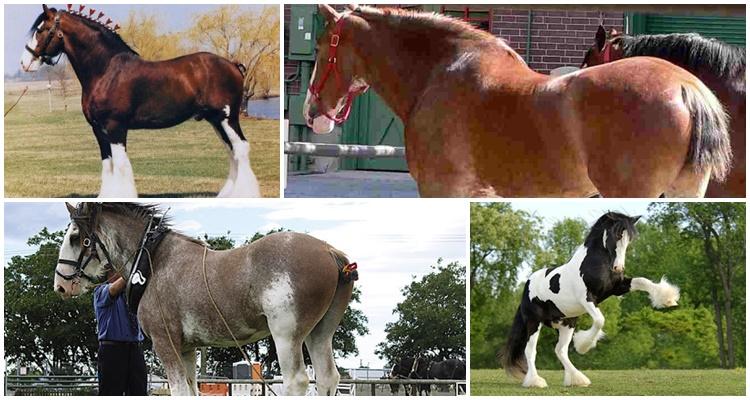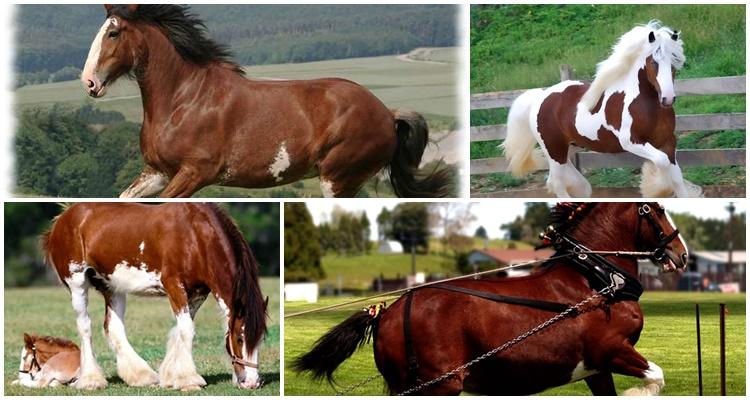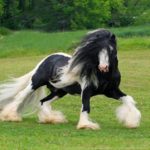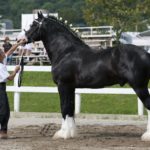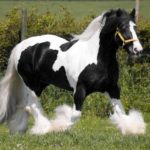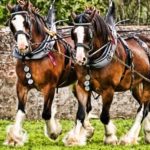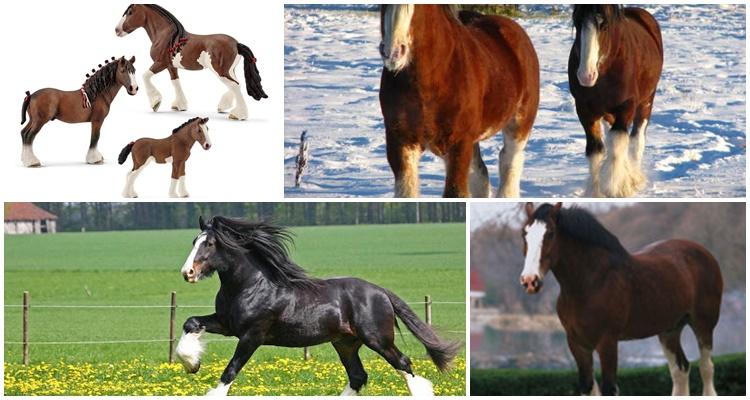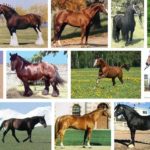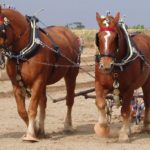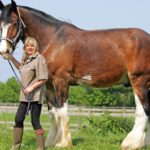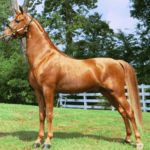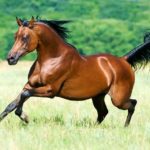Clydesdale horses are considered giants of the equestrian world. These giants, originally from Scotland, are still used in agriculture to transport heavy loads. In the 70s of the last century, the population worldwide decreased to almost 900 individuals. Today, all possible measures are being taken to revive the once popular species of animals.
History of the breed
The Clydesdale breed was the result of crossing local mares with horses from Holland. The stallions were brought to Scotland by Duke Hamilton IV in the 18th century.Large and strong animals were extremely popular among the population. The animals were distinguished by good health and extreme endurance.
Gradually, giants became widespread not only in Scotland and England, but also outside the United Kingdom. The horses were even included in the stud book. Gradually the animals became even more powerful. The development was influenced by regular crossing with English breeds of heavy draft horses.
During the First World War, Scottish heavy trucks were in demand in the army. But with the development of technological progress and the advent of horseless carriages, interest in animals began to disappear. Clydesdale horses are on the verge of extinction.
The revival of the breed was facilitated by programs adopted at the state level and the efforts of enthusiasts. Now the number of heavy trucks has increased to 5 thousand. And in Scotland, giants are considered historical value.
Lifestyle in nature
To successfully breed the Clydesdale breed, it is important to understand what affects the condition of horses in nature:
- Animals need fresh air. In unfavorable conditions, the horses' immunity will weaken. The optimal ambient temperature for keeping heavy trucks is 15 °C.
- High humidity leads to diseases.
- Sunlight is vital for giants. Ultraviolet rays help fight microbes, absorb vitamins and activate physiological processes. But extreme heat can lead to heatstroke. Therefore, it is important to organize shaded areas for relaxation in hot weather.
- It is easier for Clydesdale horses to go without food, but they need to drink plenty of fluids regularly.
The combination of all factors will have a beneficial effect on animal health.
Description and characteristics of the Clydesdale horse
A distinctive feature of the breed is the large size of the horse. The height of an adult stallion reaches 1.8 meters, and the weight approaches 1 ton. The shape of Clydesdales is harmonious. Distinctive features:
- Draft horses have an elongated head, widened nostrils and a large forehead.
- The muscular body is slightly shortened, the straight legs are decorated with lush friezes.
- The Scots can boast a luxurious mane and a thick, long tail.
- The color of the horses is bay with spots. Specimens of red and roan color are often found. Gray varieties are considered a rare exception.
The animals are calm and good-natured. Horse breeders call Clydesdales phlegmatic. Their bright appearance means that horses are attracted to participate in parades and reviews of the royal guards. Aristocratic horses often accompany the excursions of the nobility.
Advantages and disadvantages
Breeders use large and hardy animals as improvers of other breeds. The blood of tireless immigrants from Scotland made it possible to refine the qualities of trotters and draft horses.
The advantages of the breed are obvious.Heavy trucks continue to be used in agriculture. Hardy animals are especially useful in mountainous areas and forests, where it is not possible to use special equipment.
Maintenance and nutrition
High humidity and dampness have a negative effect on horses. Poor living conditions often cause illness. In the stable they even advise installing a thermometer and monitoring the microclimate in the stall. In cold regions, pens must be insulated, and if necessary, a heating system must be installed.
To keep the Clydesdale breed, choose a spacious room. The floors are covered with straw or sawdust. Horse care:
- Daily walks in the fresh air.
- Inspecting and cleaning hooves after exercise.
- In summer, swim at least 2 times a week.
- Regular brushing of the mane and tail.
Clydesdales need plenty of fluids to drink. The norm is to consume 70 liters of water per day. The diet consists of fresh greens in summer and hay in winter. Grains, as well as vegetables and fruits are added to the diet. From time to time, horses are allowed to eat sugar in small quantities. Vitamin supplements are beneficial for animals.
Breeding and reproduction
The time for mating is usually chosen in the spring or early summer. Then the foal will be born in the next warm season. Children benefit from sunshine and an abundance of fresh greenery. For mating, a mare is chosen that is larger than the stallion.
Animals from the age of 3 years, when the process of puberty is completed, are suitable for breeding. Reproduction occurs both naturally and using artificial insemination methods.
Diseases
Like other horse breeds, Clydesdales are susceptible to various ailments.The most common lesions are the intestinal tract and problems with the hooves and joints. A sick animal can be identified by restless behavior, a sharp drop in activity and dull fur.
To make a correct diagnosis, temperature and pulse are checked. If necessary, blood is sent for tests. Treatment methods are best left to a veterinarian. Each horse develops the pathology differently.
Large, hardy and at the same time beautiful horse breed Clydesdales were already on the verge of extinction. Scottish heavy trucks have been preserved thanks to the efforts of enthusiasts. Animals are valued all over the world.

